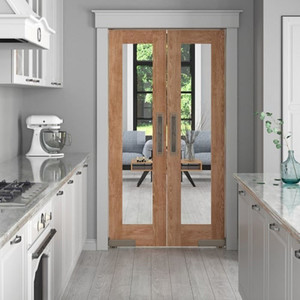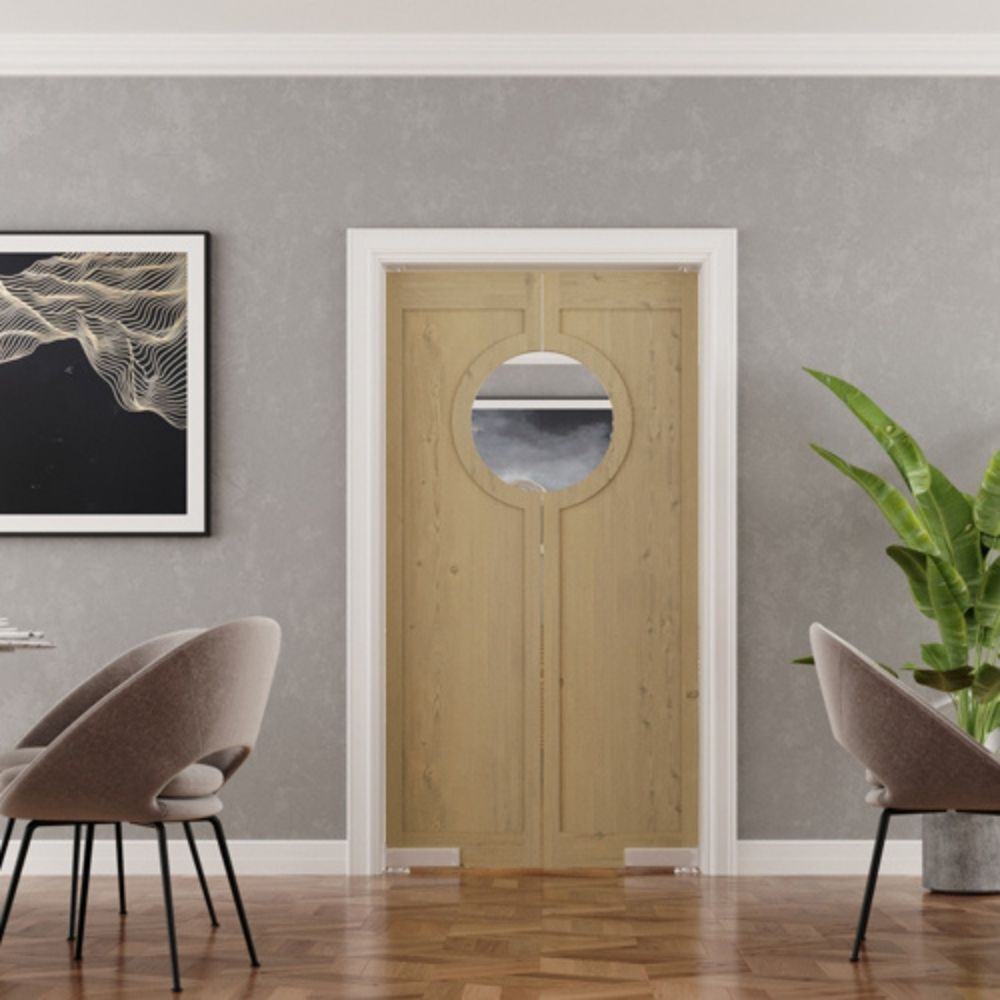
Multi-Slide Door vs. Swing Door: Which Is Right for You?
Selecting a door for your home involves carefully considering factors that will impact the home’s functionality and appearance. Understanding the fundamental differences between door styles helps homeowners make informed decisions that align with their specific needs, space constraints, and design preferences.
Key Takeaways:
- "Swing doors are easier to install and more affordable but require clearance space, while multi-slide doors save floor space and create seamless transitions."
- "Multi-slide doors offer a sleek, modern aesthetic with large glass panels, while swing doors provide traditional versatility with customizable designs and hardware."
- "Swing doors have lower costs and simpler maintenance, while multi-slide doors demand higher upfront investment, specialized installation, and regular track upkeep."
This comprehensive guide examines the key characteristics, benefits, and considerations associated with multi-slide doors and swing doors. Here’s the information you need to choose the door configuration that supports room flow and requires minimal maintenance.
Multi-Slide Doors
Multi-slide doors are a contemporary approach to interior and exterior door design. They feature multiple individual panels that slide horizontally along a track system, offering flexible opening configurations.
The mechanism relies on a sophisticated track system that supports the weight of multiple glass or solid panels while ensuring smooth operation. People can typically open each panel independently, providing versatility in how much of the opening you want to access at any given time.
Installation requirements for multi-slide doors are complex because they necessitate precise measurements and, occasionally, structural modifications to accommodate the track system. The header must be engineered to support the distributed weight of all panels without becoming aligned.
These doors work exceptionally well in spaces where you want to create a seamless transition between indoor and outdoor areas or when connecting large interior spaces. The ability to stack panels on one or both sides creates an almost unobstructed opening when fully opened.
Swing Doors
Swing doors operate on the standard hinge system that has been used for centuries. One or more panels rotate on a vertical axis to open inward or outward.
The installation process for swing doors is typically more straightforward, requiring a properly framed opening and appropriately positioned hinges. Homeowners can typically install standard swing doors using existing door frames with minimal structural modifications.
Double pantry doors are an example of a swing door design; the two panels swing open from a central point to provide access to storage areas or closets. The configuration maximizes the opening width for the utmost functionality.
Single swing doors require clearance space in the direction they open. Double swing configurations require clearance on both sides but provide a wider opening with both panels open. Just remember to consider how the doors open when planning furniture placement and room layouts.
Space Considerations and Room Layout
Room dimensions determine if a multi-slide door or a swing door will function most effectively in a space. Swing doors require ample clearance space, so homeowners must keep furniture or other obstacles out of the way. These doors can decrease usable floor space in extremely small rooms.
Multi-slide doors move parallel to the wall, maintaining consistent floor space usage regardless of their position. This design eliminates the need for swing clearance, but it demands wall space for panel stacking.
Ceiling height affects both door types, but in different ways. Multi-slide doors require adequate overhead clearance for the track system, while swing doors need sufficient height to accommodate the door frame and overhead hardware.
Traffic flow patterns within your home should influence your door selection, too. Multi-slide doors can remain partially open to maintain circulation while providing some separation, whereas swing doors are typically either fully open or fully closed.
Design and Visual Appeal
Multi-slide doors often appear more contemporary and minimalist when closed. The clean lines and uninterrupted glass or panel surfaces create a modern aesthetic that complements contemporary architectural styles.
Swing doors offer more traditional design flexibility with options for raised panels, glass inserts, and various hardware styles that can complement both traditional and contemporary interiors. The familiar proportions work well with established architectural elements.
Frame visibility varies between the two systems, with multi-slide doors typically featuring more prominent track systems that become part of the visual design. Swing doors can have minimal frame visibility, especially when using traditional casing and trim work.
Hardware selection affects the overall appearance of both door types, but multi-slide doors often showcase their operating mechanisms as design elements, while swing door hardware can either blend in or make a statement.
Maintenance and Durability Factors
Track systems in multi-slide doors require regular cleaning and occasional lubrication to maintain smooth operation. Debris accumulation in tracks can cause operational problems and may require professional maintenance to resolve.
Swing door maintenance focuses primarily on hinge adjustment and occasional lubrication. The simpler mechanical system typically requires less specialized knowledge to maintain and repair when issues arise.
Weather exposure affects both door types differently, with multi-slide doors having more complex sealing requirements due to multiple panels and track systems. For exterior applications, weatherstripping and maintenance are critical.
Panel replacement or repair procedures vary significantly between the two systems. Swing doors commonly facilitate individual panel replacement without affecting the entire system. On the other hand, multi-slide doors may require more comprehensive repairs when problems occur.
Cost Considerations and Installation
Initial purchase costs typically favor swing doors due to their simpler manufacturing and hardware requirements. Multi-slide doors require more complex hardware systems and precision manufacturing, resulting in higher upfront costs.
Installation expenses reflect the complexity differences between the systems. Homeowners or general contractors can often install swing doors, while multi-slide doors may require specialized installation services to ensure proper operation.
Long-term cost considerations include maintenance requirements, potential repair needs, and energy efficiency factors. While multi-slide doors may cost more initially, their space-saving benefits might provide value in specific applications.
Structural modifications may be necessary for multi-slide door installation, which may increase the overall project cost. Swing doors typically work with existing structural elements, minimizing additional construction requirements.
How To Make Your Decision
Room function and size should guide your decision. Consider how you’ll use the door each day and what operational characteristics matter most for your specific application. High-traffic areas may benefit from the partial opening capability of multi-slide doors.
Future flexibility should factor into your decision, too. Think about whether your needs might change over time. How adaptable is each door type?
The decision between multi-slide doors and swing doors depends on balancing your space constraints, design preferences, and functional requirements. Neither option is universally superior; the best choice depends on your specific circumstances.


